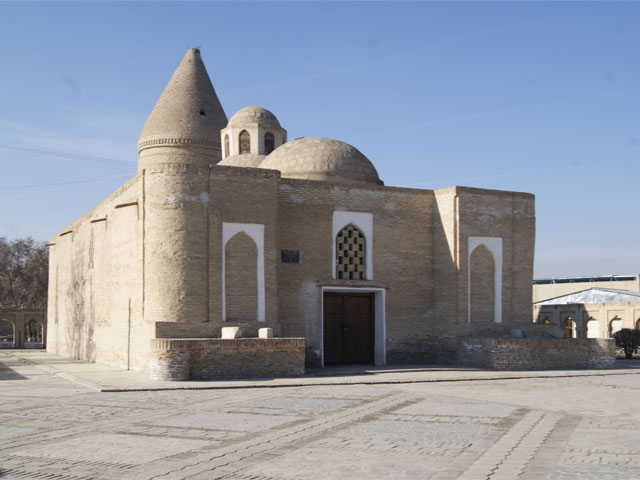Chashmai Ayub relates to the honored “track places” (“kadamjoy”), left as a heritage by sacramental people.
Unique feature of Chashmai Ayub is the dome in the shape of conical marquee which is quite common in the architecture of Khorezm in the 13th—14th centuries. Most probably, the constructors were Khorezmians by origin.
The architecture of Chashmai Ayub represents a complicated, multiplicated reconstructed monument during the 14th-19th centuries, which had finally taken the shape of an elongated prism wreathed by various forms and domes above different forms. Its sharp, unforgettable silhouette is performed by a lifted double dome with conical calotte on a cylindrical drum which is the main premise with the water spring. The dome cover of the mausoleum grants small hazy housings with special intimacy.
The entire view of the mausoleum emits the feeling of a vacant contemplation: “Muslims do not die, they just pass from one gate into the other”.
Nowadays, this building contains the Water Museum and a portable carpet exhibition.
On the place of modem mausoleum, as the legend suggests, there used to be a desert. Its inhabitants had suffered from the lack of water; they had prayed to God to send them at least some water. In response to these prayers. Saint Job (Ayub) had appeared in front of poor people and hit the ground with his magic staff. Sudden appearance of a well had astonished the people by its vivifying spring and its crystal clear water. It is commonly believed that the water still keeps its clearness and herbal power.























